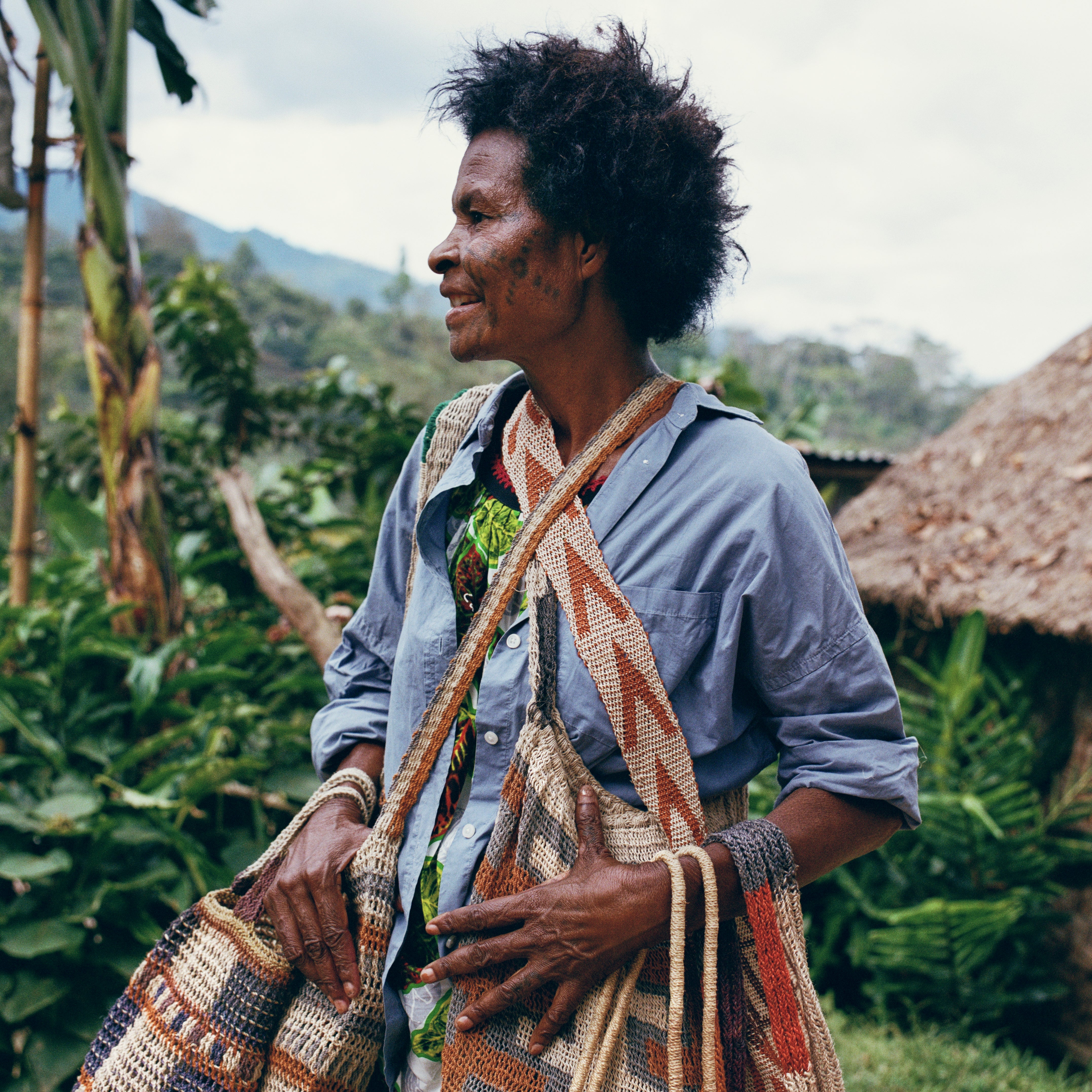Meet Jedda-Daisey Culley, the Sydney-based artist whose extraordinary artworks, composed in unexpected palettes, bring to life themes of motherhood, strength and independence. Here, Culley takes us inside her studio and shares the inspiration behind her upcoming collection.

You are an incredible colourist. What ignited your love of art, and how did you find your way with colour and palette?
When I was little my dad was an art teacher in a maximum-security prison in
Fremantle, Western Australia. I think this is important because I knew from a young age that you could make a life out of art. So, in some ways I always knew I wanted to be an artist and I was lucky enough to know this was an option. In the prison my dad worked with, and became very close with, an indigenous artist called Jimmy Pike [the famed Walmatjarri artist whose work was exhibited in major Australian galleries even before he was released from prison]. Growing up with Jimmy in my life I was exposed on a deep level with an incredible artist and incredible colourist. I was taken up to the north of Western Australia to where Jimmy later moved near the Kimberley. I remember the colours of that area, the intensity, the vibrancy. It had a huge impact on me as a child. It felt magical, bright reds and huge colourful skies. I have always been drawn to trying to capture that kind of frequency in my work, how beautiful the world is, how esoteric the colours of the earth can be. So, essentially the colours in my paintings come from landscape at particular times of day when the sky and the energy of the place is buzzing with light. I like to remember how at precious moments our world looks and feels otherworldly. But, to answer your question, I guess I don’t really remember deciding to be an artist. It was just something I knew was possible, something I was committed to do.

Can you describe your creative process, how does a new series come together?
When I come up with an idea for a new body of work, it’s usually because I’ve become obsessed with something – I have a very obsessive personality, I get stuck on an idea and repeat it over and over, as though I’m working through something deeply personal that I haven’t yet fully understood. I want to see it again and again like a perfectionist trying to get it right because there’s so much tied up in that one image or that one posture that I need to make sure I can see what it is that I’ve been hiding within myself. I am often shocked at my own honesty, and embarrassed by my oversharing but the narrative of my practice is in the mark-making, the performative intuitive way paint is laid down. There’s an urgency as if there is a fight happening in a two-dimensional realm, the colours pushing and pulling against one another like a little war I am having on the canvas. That war is never really over, but there is a point when everything is in harmony. I throw my whole body into the physicality of the gestures, the large scale and the speed pushes my body, becoming lost in the fluidity in motion. It’s almost a trick to make seen the secrets my body knows.
We see mothers and women as a recurring theme throughout your work, what interests you most about this subject?
Motherhood has become a very important theme in my practice. Before becoming a mother, my work was often about learning to embrace the different aspects of my femininity and coming to terms with intimacy as a woman and sharing that intimacy with others which very naturally developed after having children. I think what has always interested me about being a woman has been the conflicting ideals of expressing female power. Becoming a mother made it very clear that women are, and always have been, extremely strong which led me to become even more curious about the relationship between strength and intimacy, power and nurture. I think that’s an extraordinary topic to be able to delve into as a woman and as a painter. There’s so much deeply anchored in those fundamental human connections of mother and child.

What is your philosophy when it comes to motherhood, what values do you hope to instil in your children?
As a mother it’s important for me to raise my children to be freethinkers, to be strong, to be courageous, to be kind, to be caring to others, to care for the earth, to find magic in nature, to love our planet, to grow flowers, to be open-hearted and curious and to stay playful in their spirit for their whole lives.

We love your use of different mediums, including weaving and tapestry. What is it that draws you to the Among Equals Bilum bags?
What I love about Among Equals is the materiality and the history that is woven into each piece; the stories, the time, the women. I love the colours and the connection to landscape and culture that is so generously being shared. There is so much to learn from each piece; about where they have come from, who has made them and the nature of ‘women’s work’ throughout centuries. Each piece is so deeply loaded with a rich cultural and historical narrative.

Photography by Hannah Scott-Stevenson.


